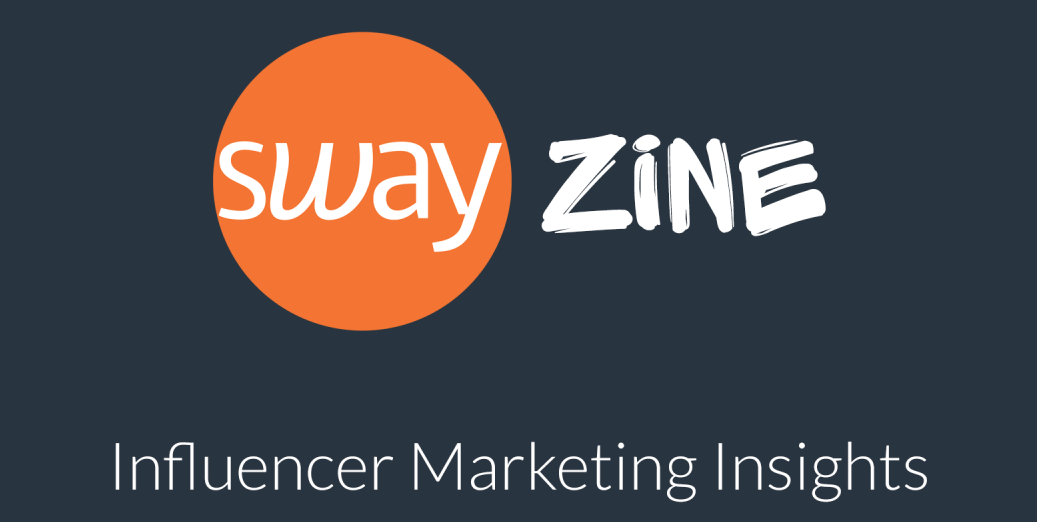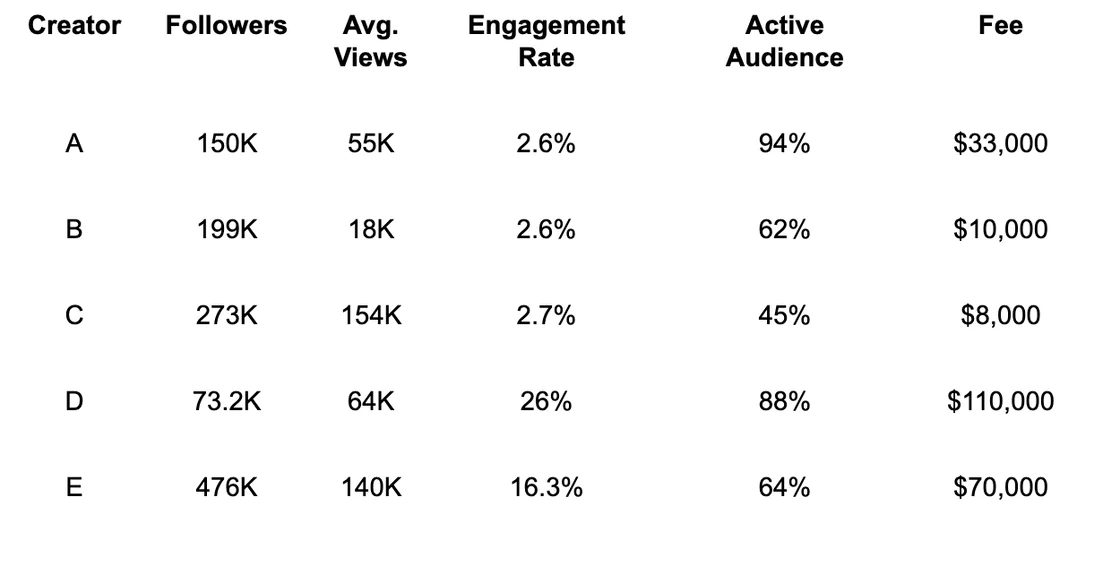
I was listening to the Armchair Expert podcast yesterday, and this week’s expert guest, Toby Stuart (from the Haas School of Business), was on to promote his new book, Anointed: The Extraordinary Effects of Social Status in a Winner-Take-Most World. The conversation covered all the ways in which human behavior is driven by social status. Not money or power, but where we believe we sit in the social hierarchy.
It got me thinking about influencer pricing.

Every few weeks, someone posts on LinkedIn about how inconsistent influencer pricing is.
We need more transparency.
We need to standardize rates.
We need an algorithm or calculator that makes it all make sense.
And yet it never quite does.
The Myth of the Perfect Pricing Formula
Here’s a look at a recent Instagram campaign we ran (the deliverables, usage terms, and exclusivity were identical for each creator):

If you are looking for logic in that table, you will not find it.
It is not about follower count, engagement, or even deliverables. Those things matter, but they do not tell the full story.
Status Is the Missing Variable in Influencer Rates
The reason influencer pricing feels so erratic is because it is built on status, not just metrics.
Status is what makes one creator’s $5,000 quote feel like a bargain and another’s $500 quote feel inflated. It is the perception of social capital; the cool factor, the cultural influence, the sense that this person carries weight within a certain audience or aesthetic or community.
You cannot put that into a spreadsheet.
You cannot train an algorithm to detect it.
And it changes constantly, by platform, by trend, by the shifting sands of who is hot right now.
The Beauty (and Frustration) of a Status Economy
Influencer marketing is one of the few spaces where traditional market logic breaks down.It is not a perfectly efficient system, and that is part of what makes it work.
If we keep trying to turn it into a math problem, we will miss what actually drives the value: human perception. Status is intangible, but it is also powerful, and in the creator economy, it might be the most valuable currency of all.
Maybe instead of trying to flatten it, we should learn to navigate it, understanding how status forms, shifts, and translates into influence.
Because the truth is, you cannot algorithm your way to status.
Danielle
